UPDATE | 2023年11月10日
日本はサインに並ぶ、文書の信頼性を保証するための手段として、「ハンコ」が利用されていることについてご存じでしょうか? 日本ではよく、荷物が届いたときにサインの代わりとして、または契約を結ぶときなどにサインと一緒に、小さい棒の形をしているスタンプのような「ハンコ」というものが必要になります。 外国人はハンコが使えるのでしょうか?どこで手に入れられるのでしょうか?そもそも外国人には必要なのでしょうか? この記事では、上記のような疑問の回答をはじめ、ハンコについて説明します。

ハンコについて聞いたことのある方は、「印影」、「印鑑」や「印章」といった言葉も聞いたことがあるかもしれません。それらの言葉には全部「ハンコ」を表す「印」という漢字が含まれていますが、意味が少しずつ異なりますので、以下にそれぞれの言葉の定義を挙げたいと思います。
印影(いんえい)は、紙などにハンコを押したあと(名前や絵など)を示しています。
印鑑(いんかん)は、役所や銀行に登録をしたハンコの印影のことです。(詳しくは「2.ハンコの種類」をご覧ください。)
印章(いんしょう)は、ハンコ本体のことです。棒状の形をしており、印影を残すためのものです。
捺印(なついん)は、ハンコを押す行為のことです。
ちなみに、日本人でもこれらの言葉の使い分けをよく間違って「印章」の代わりに「印鑑」と言ってしまったりする場合が多いので、気を付けましょう。

ハンコを何に使うかによって、用いるハンコの種類は違います。次はハンコの種類についてお話します。
認印(みとめいん)
認印は、日常生活で「確認しました」という意味で、サインの代わりに使えるハンコです。例えば、宅配物を受け取るときなどは、認印が使われます。認印は役所などに登録する必要がないので、買えばすぐに利用できます。 日常生活で確認サインが良く求められる場合は、認印を持っていると便利かもしれません。ただし一般的には外国人の方が認印を持つことは期待されておらず、サインで代用できることがほとんどですので、なくてもご安心ください。 また比較的簡単に購入できるので、お土産として持っておくのもいいでしょう。
銀行印(ぎんこういん)
銀行印は、銀行で本人確認のために使うハンコです。身分証明書と同じく、"他人ではない"という証明として使われています。
銀行印として使いたいハンコは、銀行で印鑑登録することが必要です。自分の口座からお金をおろしたり、重要な手続きをしたいとき、ハンコが登録した銀行印と一致しないと、手続きができませんので注意しましょう。
留学生は、奨学金の入金、寮やアパートの家賃支払いといった目的で銀行口座を開く場合が多いので、銀行印を持つのをお勧めします。

実印(じついん)
実印は、重要な書類の捺印のため使われています。その書類に捺印したのが本人だったということを公的に証明するために、実印というハンコは区役所・市役所などで印鑑登録をしておかなければなりません。さらに、実印としてハンコを登録すると、印鑑カード(印鑑登録証)という書類を渡してもらえます。
実印はどんなときに使うかというと、例えば家や車を買うときや、ローンの契約などを結ぶときや、会社を設立するときなどが挙げられます。
一般の留学生は実印を持つ必要がありませんが、万が一上記のような重要な契約を予定する方は実印の登録をおすすめします。
さて、認印、銀行印、実印として同じハンコを使い回すのは可能なのでしょうか?
結論から言えば可能です。しかし、実印と銀行印は本人確認に使われている重要なものなので、認印として使い回すのは控えた方がいいです。なぜなら、認印の印鑑はコピーしやすく、悪用されるリスクが高くなるからです。
[PR]

ハンコは、様々なサイズと素材があります。
サイズは直径が、10.5mm、12.0mm、13.5mm、15.0mm、16.5mmまたは18.0mmから選ばれます。一般的には「2.ハンコの種類」で説明した、ハンコの種類ごとにサイズの目安があり、認印は10.5mm~12.0mmのサイズ、銀行印は12.0mm~15.0mmのサイズ、実印は13.5mm~18.0mmを選ぶ傾向があります。
しかし、日本人の方の苗字は漢字で2~3文字を超えない一方、外国の苗字はより長い場合が多いです。名前が長い方は、文字が丁度よく収まるように目安より大きめの認印を作っても問題はありません。とはいえ、13.5mm以上の認印、15.0mm以上の銀行印を作るのはおすすめしません。理由は、それぞれを捺印する場面で、押すスペースが足りない可能性が高いからです。
ハンコの素材も、サイズと同じく選択肢が多いですが、基本はハンコの種類にかかわらず、どの素材でも選んで大丈夫です。
人気の素材は木材、牛角、チタン、水晶などが挙げられます。このうち値段が高くないのは木材で、その中でも「柘(ツゲ、またアカネと読みます)」がよく選ばれます。
お金に限りがなく、よりおしゃれで耐久性のあるハンコを希望する場合は、牛角、チタンや水晶が選択肢となります。素材によって様々な色も提案してもらえます。
他にも素材はあるのでしょうか?
ハンコの中にはゴム素材の「ゴム印」や「インク内蔵式ハンコ(インキ浸透印)」と呼ばれるものがあります。これらは使いやすく認印として使うには便利ですが、銀行印や実印としては認められていないので、ご注意ください。
その上、もう一つの注意点があります。過去には象牙もハンコの素材として使われましたが、今は法律違反になっています。もし象牙のハンコを売られそうになりましたら、それは詐欺か違法売買なので、お気を付けください。

ハンコを買いたいとき、どこでどうやって買えばいいのでしょう。
外国人の方向けの主な買い方は、はんこ屋に行くか、オンラインで注文するという2つです。100円ショップ、文房具ショップでもハンコは売られていますが、ここで基本的に見つけられるのは日本人の名前のものだけです。
オンラインでも対面でも、ハンコを注文するときは大体同じルール・流れになります。
まずは、ハンコに入れる名前を決めなければなりません。ハンコは、漢字、カタカナ、またはローマ字で名前を書けます。本名が漢字でない人は、せっかくなので漢字を当て字にしてハンコを作りたくなるかもしれませんが、たとえ認印だとしてもそれは避けましょう。さらにハンコに入れるのは、苗字だけ、下の名前だけ、または名前の部分が選べますが、あだ名などは利用できません。
名前の入れ方を決めたら、書体(フォント)、サイズ、素材を選びます。
はんこ屋によって作成にかかる時間は異なりますが、早ければ当日でも作ってもらえる場合があります。
また、ハンコを買うと決めたら、ハンコと一緒にハンコケースと朱肉を買うのをおすすめします。
ハンコケースは、ハンコを長く使えるように、保管のために必要です。また、ハンコに付いたインクは使うたびに拭き取りますが、万が一拭き取りきれていなくてもケースがあれば鞄やジャケットの中を汚さずにすみます。ハンコケースは100円ショップでも買えますが、よりおしゃれなケースはハンコ屋やネット上で購入できます。さらに、旅行に行ったらお土産ショップ辺りでは、素敵なハンコケースを見られます。
朱肉は、ハンコのための特別なインクを用いたスタンプ台です。もし"ピンク"や"赤"のインクのスタンプ台があっても、朱肉以外のものはハンコには用いられないのでご注意ください。朱肉はどんな文房具ショップでも買えるものです。サイズも様々あり、小さいケース用の朱肉も珍しくないので、持ち運びに便利です。
ケースと朱肉の他に、捺印マットもおすすめです。捺印マットは、捺印したい紙の下に置いておくと、紙が滑りにくくなるおかげで印影がきれいに出ます。とはいえ、捺印マットがなくてもハンコは簡単に使えます。

銀行で登録しておいた銀行印、または役所で登録しておいた実印は、本人確認に使われる大切なものなので、失くしたら誰かに悪用されてしまう危険があります。その危険を防ぐために、銀行印や実印を失ったことを確認したらすぐに銀行(実印の場合は役所)に行き、紛失届を出しましょう。その上で、ハンコを失ったことを警察にも知らせてください。なお銀行に「銀行印を失った」という連絡をすると口座での取引が停止されるので、ご注意ください。
次に必要なのは新しい印鑑を登録することです。登録するために必要な持ち物を確認した後、その持ち物と新しいハンコを窓口に提出し再登録をしましょう。

この記事では、ハンコの種類、形、買い方、紛失したときの対処法といったハンコに関する基本を説明しました。長期間日本に住む場合は、ハンコが役に立ちますので、ぜひ注文してみてください。また、短期の留学であっても、良いお土産になれるかもしれません。
日本にはこの記事で説明したような書類に使うハンコの他に、「落款印(らっかんいん)」という、日本画や書道などのアート作品への署名に使われているハンコがあります。この落款印のように、日本で買った認印を自分の絵や手紙などに使ってみても楽しいです(もちろん、落款印もお店やオンラインで注文できます)。しかし、登録した銀行印または実印は、母国に帰ってもこう使わないように気を付けましょう。

(株)アクセスネクステージ 外国人進路支援事業部の社員。ベラルーシ出身。2021年6月に来日し、2023年3月までお茶の水女子大学で国費研究留学生プログラムに参加。趣味はPCゲーム、絵描き、国際交流。
[PR]
[PR]